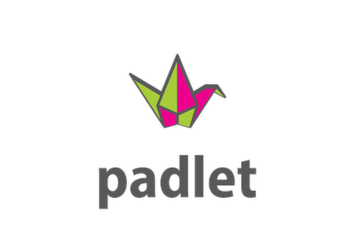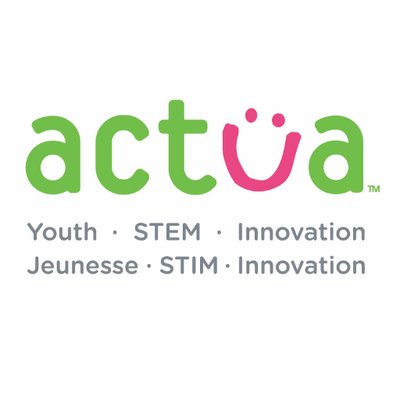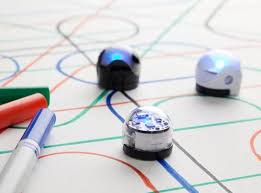
I have always considered ‘literacy’ regarding one’s ability to read and write. However, I have come to understand that in our increasingly growing digital world, literacy can also be applied in a digital context. It is important for one to develop their digital literacy, which “literacy incorporates print literacy, but adds new capacities, competencies, and comportments into the mix” (Hoechsmann, M., & DeWaard, H., 2015). The development of one’s digital literacy is important because “digital tools and practices permeate our everyday activities” and lives (Hoechsmann, M., & DeWaard, H., 2015). Therefore, we can consider digital literacy as critical, which is where the term ‘critical digital literacy’ streams from. I understand the word critical to have “two… dimensions at play” because “both are implied when we use the term” (J. H., & Coombs, A., 2013). First, critical has the connotation that one will use critical thinking in digital contexts for “analysis and judgement… [of] content, usage and artifacts of the technology” (J. H., & Coombs, A., 2013). Secondly, critical refers to the “external” (J. H., & Coombs, A., 2013) relations to technology. The “external” connections to technology refer to the extent of developing digital literacy is pivotal to one’s “development” and “social relations” that are connected to technology (J. H., & Coombs, A., 2013). In our world individuals will be challenged to have success in society without being competent in specific areas of technology use. Helping our students to develop their ‘critical digital literacy’ is key for their future success due to our ever more digital society.
Becoming familiar with the term of ‘critical digital literacy’ has helped me to understand the importance behind teaching children about the digital world. If students cannot develop technological skills, they will struggle to become successful in the future because we need to use and interact with technology daily. I cannot imagine someone would be able to successfully have a career without having knowledge of email, online banking, word processing systems, and many more technical skills that I feel we often take for granted. Just as we learned to read as children, we also need to develop our digital literacy abilities.
Understanding the concept of critical digital literacy will assist my participation in this course because it will encourage me to branch out and try new types of technology I could use as a teacher. For example, this week I learned how to use Padlet. I made a board to post ideas that I could use in the classroom based on the framework of USE, UNDERSTAND & CREATE: A Digital Literacy Framework for Canadian Schools. You can check out my first Padlet by following the link below. I plan to use this application in my future classroom as a teacher because I believe it is an awesome way to engage students in sharing their learning using technology. I am excited to try out many more applications and programs during this course that will come in handy when I am facilitating learning in my future classroom.

The framework that I would like to share a few insights about is the USE, UNDERSTAND & CREATE: A Digital Literacy Framework for Canadian Schools. I selected this specific framework because I liked how this framework covered a broad range of aspects that would be important to teach children so that they can develop a multitude of digital competencies. I found it is important that the framework covered more than only developing student’s skills to use technology, but also put an emphasis on community, health, and consumerism. I found this important because in our present day it is difficult to separate the digital world from everyday life. The portion of the framework I found most interesting was the ‘digital health’ section. The section outlined the importance of developing a healthy relationship with technology. With our world becoming increasingly digitalized it is important that as teachers we teach our students how to have ‘digital health.’ One of the ways we can do this is by teaching our students the “skill [of] managing screen time and balancing [their] online and offline lives” (USE, UNDERSTAND & CREATE: A Digital Literacy Framework for Canadian Schools – Overview). In our classrooms we can exemplify managing screen time to our students by having a limited time throughout the day where the students are using computers or iPads, to avoid being in front of screens all day.
Additionally, I found that the portion of the framework ‘finding and verifying’ to be important. In this section of the framework, it outlines how important it is for “students” to develop “skills to effectively search the Internet for information they need” and after they need to be able to successfully “evaluate and authenticate the sources and information they find” (USE, UNDERSTAND & CREATE: A Digital Literacy Framework for Canadian Schools – Overview). As a teacher, we can show our students how to do this by informing them of what kinds of sources are acceptable and what to look for when deciding if the information is acceptable. A great example of teaching students how to achieve ‘finding and verifying’ is showing them a fake website. When I was in a placement, my associate teacher taught her students about understanding if the information they find is credible by showing them the ‘endangered tree octopus’ website. The ‘making and remixing’ section focused on how teachers should “enable students to create digital content…, use existing content for their own purposes… and to use digital platforms to collaborate with others” (USE, UNDERSTAND & CREATE: A Digital Literacy Framework for Canadian Schools – Overview). I found that my current teaching and learning practices lined up well with the portion of the framework that outlined ‘making and remixing’ because I have done an abundance of work with children in STEM through my summer job with Actua Canada. We introduced children to coding by using Ozobots to read color codes the children could create. Please view the YouTube videos below to learn more about Ozobots, Coding for Kids, and Actua Canada.

Actua Canada looks at digital literacy

How do Ozobots teach children to code?

Above is a photo of Ozobots.
There is an abundance of digital competencies that teachers need to teach their students to help them have success. I am looking forward to implementing some of these ideas into my future classrooms to help my students develop a great critical digital literacy.
Thank you for reading,
Chelsea
References
Hoechsmann, M., & DeWaard, H. (2015). Introduction. In Mapping Digital Literacy Policy and Practice in the Canadian Education Landscape (pp. 1-5). Ottawa: MediaSmarts.
J. H., & Coombs, A. (2013). The five resources of critical digital literacy: A framework for curriculum integration. Research in Learning Technology, 21. Retrieved September 16, 2018, from https://www.researchgate.net/publication/269900385_The_five_resources_of_critical_digital_literacy_A_framework_for_curriculum_integration.
USE, UNDERSTAND & CREATE: A Digital Literacy Framework for Canadian Schools – Overview (n.d.). Retrieved September 17, 2018, from http://mediasmarts.ca/teacher-resources/digital-literacy-framework/use-understand-create-digital-literacy-framework-canadian-schools-overview

Your blog is very interesting and the layout is very well organized. I like in this post how you mention the importance of critical digital texts and how your use of digital texts will be used in the future. Your work this summer with Ozobots and stem is really intriguing. I am in the stem program myself (in the sciences) and the incorporation of technology as stem subjects with literacy is very important for the classroom. By tieing different subjects and disciplines together through a variety of platforms and ways to learn is important to benefit students. You also make the point that people without a basic knowledge and understanding of technology or platforms will not do well in a profession. The present working world revolves around the use and know how of technology. With minimal or no knowledge employment may be hard to find but many children have grown up with the evolution of technology in some capacity while in school. Overall you related well to the article by Hinrichsen and Coombs and how it related to your experiences and the world in whole.
LikeLike
Thanks for your feedback, Lauren! I hope that someday I can bring these different technological resources to my classroom so I can share these experiences with my students. I hope that I can further develop my skills with technology so I can help my future students have success. I think that teaching students STEM skills, such as coding or programming, is not only helpful for them in the digital world but inspires good life skills such as creative problem-solving. When doing some reasearch I found that there were other’s who agreed with this thought. Kajeet writes on his blog that “coding teaches problem-solving and analytical skills” that are important skills to have in life (Kajeet, 2017). Do you think there are other digital literacy skills could translate to other essential life skills?
LikeLike